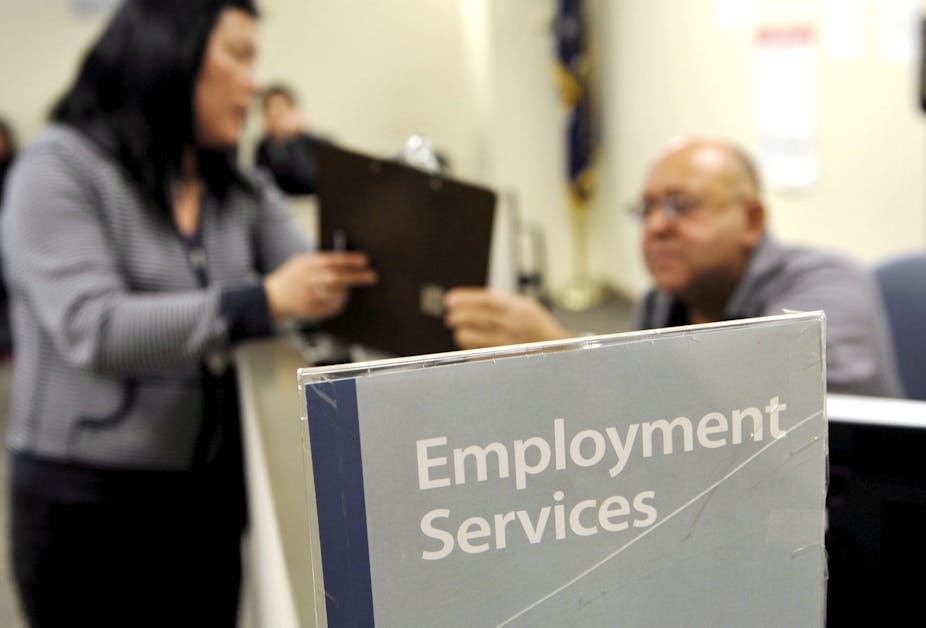A booming economy is part of the sales pitch for company tax cuts in Australia. And the strong performance of the low-tax US economy is held up as evidence to support this.
Take the example of unemployment rates – where a comparison between the US and Australia appears to show a US labour market roaring back into life, while the Australian labour market has remained sluggish. But appearances can be deceiving.
If we examine the proportion of people employed in Australia, as compared to the US, there is a very different story.
Comparing employment rates in the US and Australia
During the global financial crisis, the US unemployment rate rose from 5 to 10%. Since then, however, it has steadily fallen to its current level of only 4%. So high unemployment in the US seems a thing of the past – a temporary false step in the progress of the world’s most dynamic economy.
Compare this to the situation in Australia. The rate of unemployment during the global financial crisis rose by only a small amount, from 4 to 6%. But, in contrast to the US, after that time in Australia it has hardly moved.
The rate of unemployment in a country is equal to the ratio of the number of people unemployed and the number of people in the labour force. The labour force equals employment plus unemployment; that is, people who are in jobs plus people who are not employed and actively seeking work.
Suppose, for example, that in a country there are 90 people who are employed and 10 who are unemployed. This means that the labour force is 100 people and the rate of unemployment in the country is then 10%.
Read more: The growing skills gap between jobs in Australian cities and the regions
This definition of the rate of unemployment means that it can decrease in two ways.
First, an increase in employment, keeping the size of the labour force constant, will cause a reduction in unemployment and hence in the rate of unemployment. This is the way we would most often think of the rate of unemployment being reduced.
But there is also a second way this can happen. A decrease in the labour force, holding constant the number of people employed, will also shrink the number of people unemployed and the rate of unemployment.
Why labour force participation matters
Understanding whether it’s rising employment or decreasing labour force participation behind a falling unemployment rate matters – because they say very different things about what is happening in the economy.
Rising employment means a growing economy – where the rate of unemployment is decreasing because extra jobs are available. By contrast, decreasing labour force participation means that jobseekers who want to work are actually stopping actively looking for jobs – so the decreased rate of unemployment is explained by a lack of jobs.
Between the onset of the global financial crisis and the end of 2017, the proportion of the US population aged 16 and above who were employed fell by 2.7 percentage points. Over the same period the proportion of that population who were in the labour force (employed or looking for a job) decreased by 3.3 percentage points.
So the rate of unemployment in the US decreased because jobseekers were stopping looking for work – rather than because a larger proportion of the population were able to find jobs. There is little sign of a US labour market roaring back into life.
Compare this to Australia where the proportion of the Australian population aged 15 and above who were employed fell by 0.9 of a percentage point, only about one-third of the decrease in the US. {Same source as table below}
Meanwhile, the proportion of the population who were in the labour force in Australia remained steady, compared to the large decline in the US.
So if we were judging economic performance by the labour market over the past decade, it’s the Australian economy that has had the superior performance.
Australia’s rate of unemployment may have moved upward, compared to the falling rate in the US. But it has experienced a much smaller decline in the proportion of its population who are employed.
And its rate of unemployment is higher today only because unemployed jobseekers have retained the motivation to actively look for work, while many US jobseekers have withdrawn from the labour market.

